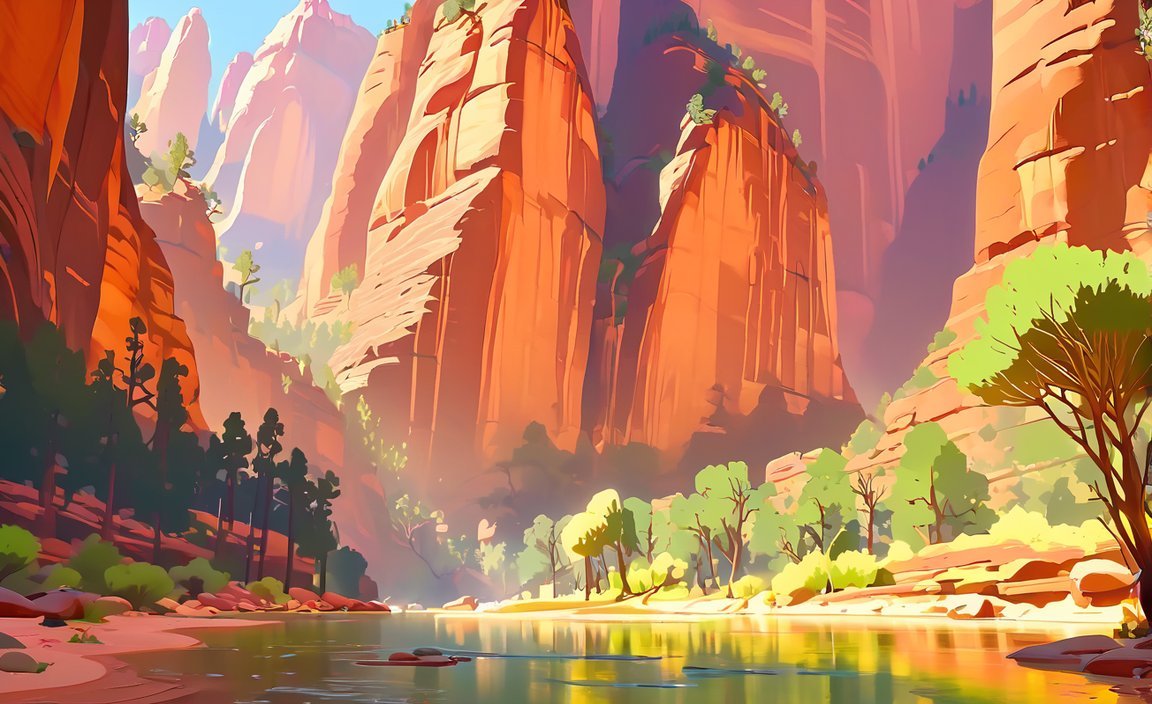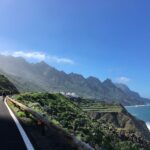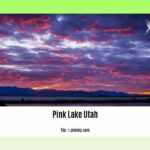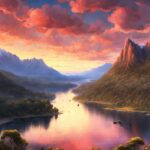Discover Fascinating Fun Facts about Zion National Park. Immerse yourself in the breathtaking beauty and discover the hidden treasures nestled within Zion National Park. From towering sandstone cliffs to diverse wildlife, this natural wonderland offers an abundance of unique experiences. Embark on thrilling hikes and witness the rich cultural history that has shaped this captivating destination. Join us as we unveil the intriguing fun facts about Zion National Park, transporting you to an enchanting world of natural marvels.
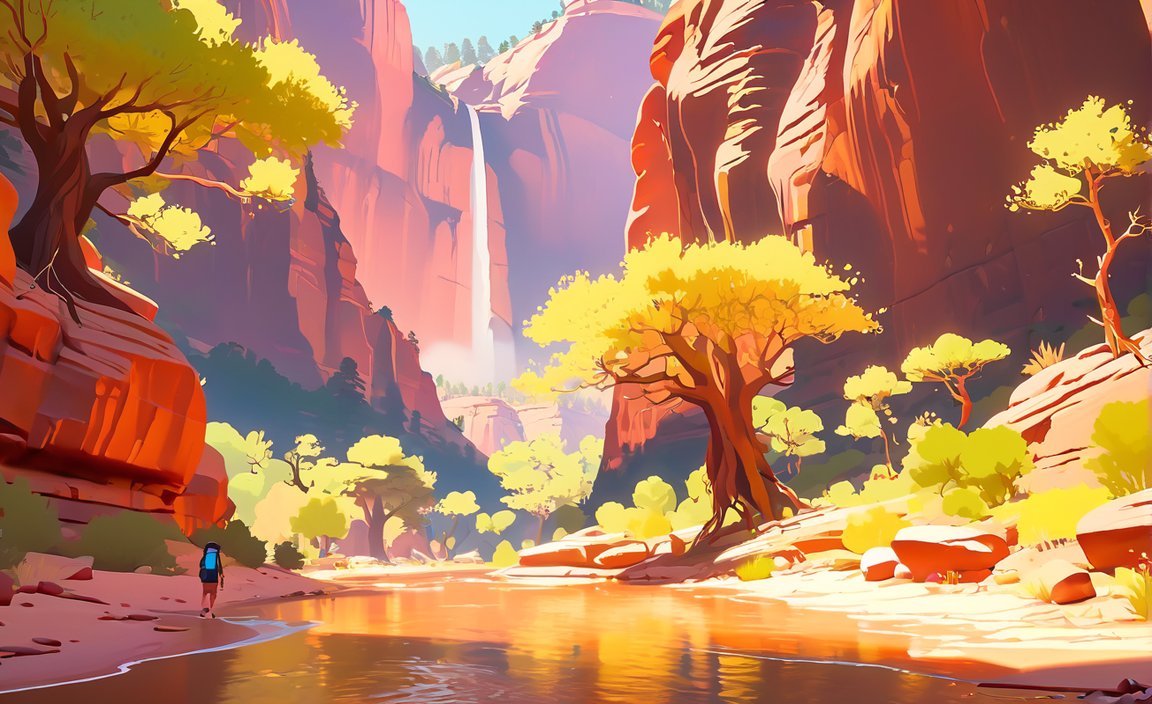
Key Takeaways:
- Zion National Park, established in 1919, was the first national park in Utah.
- The park is named after Isaac Behunin, an early Mormon settler who named it “Zion.”
- Zion is divided into four main sections: Zion Canyon, Kolob Canyons, Kolob Terrace, and the East Rim.
- The Zion-Mount Carmel Tunnel, completed in 1930, is considered an impressive engineering feat.
- The park is home to Kolob Arch, the fourth largest freestanding arch globally, measuring 287 feet long.
- Two remarkable slot canyons in Zion are called the Subway and Wall Street.
- Zion is home to 900+ plant species and a diverse range of wildlife, including the rare California condor.
- The park’s landscapes were shaped by geological processes, including the Virgin River carving through rock formations over millions of years.
Fun facts about Zion National Park
Zion National Park, located in Utah, is a nature enthusiast’s paradise. With its stunning landscapes, diverse wildlife, and rich cultural history, this national park offers an unforgettable experience for visitors. Let’s delve into some fun and fascinating facts about Zion National Park:
The First National Park in Utah
Established in 1919, Zion National Park holds the honor of being Utah’s first national park. Since then, it has captivated the hearts of millions of visitors with its natural wonders.
The Origin of the Name
The park owes its name to Isaac Behunin, an early Mormon settler who named the place “Zion” and settled in the canyon floor in 1863. This name perfectly captures the park’s ethereal beauty and significance.
The Four Main Sections
Zion National Park is divided into four main sections, each with its distinct charm and features. These sections are Zion Canyon, Kolob Canyons, Kolob Terrace, and the East Rim. Exploring each section offers a unique and diverse experience.
The Engineering Marvel: Zion-Mount Carmel Tunnel
Completed in 1930, the Zion-Mount Carmel Tunnel is considered one of the greatest engineering feats within the park. This tunnel allowed easier access to the eastern sections of the park and offered stunning views of the surrounding canyons.
The Magnificent Kolob Arch
Zion is famous for its natural arches, and the Kolob Arch is a true marvel. Ranking as the fourth largest freestanding arch in the world, it spans an impressive 287 feet in length. Witnessing this majestic arch is an awe-inspiring experience.
The Enigmatic Slot Canyons
Zion National Park is home to some captivating slot canyons. Among them, two notable ones are the Subway and Wall Street. These canyons, with their unique formations and intricate twists and turns, provide thrilling adventures for hikers and photographers alike.
Biodiversity Galore
The park boasts an incredible diversity of flora and fauna. Over 900 species of plants call Zion home, adding vibrant colors and life to the landscape. Additionally, a variety of wildlife, including the rare California condor, can be spotted within the park’s boundaries.
Geological Masterpieces
The landscapes of Zion National Park have been shaped over millions of years through geological processes. The mighty Virgin River has carved its way through rock formations, forming awe-inspiring canyons, towering cliffs, and mesmerizing rock formations. Exploring the geology of the park is like stepping back in time.
In conclusion, Zion National Park offers much more than just picturesque views. Its intriguing history, stunning geological features, and diverse wildlife create an experience that will leave visitors in awe. These fun facts about Zion National Park only scratch the surface of what this national park has to offer. So, are you ready to embark on a journey through this natural wonderland?
Note: The information provided in this article has been sourced from zionnationalpark.com.
Here are some captivating sentences with active internal links:
- Interesting facts about England: Explore the fascinating history, culture, and traditions of England with these intriguing facts.
- France interesting facts: Discover the enchanting secrets of France, from its iconic landmarks to its rich culinary heritage.
- Korea fun facts: Dive into the world of K-pop, delicious cuisine, and stunning landscapes with these fun facts about Korea.
- Interesting facts about Armenia: Uncover the hidden gems of Armenia, a country filled with ancient history and breathtaking landscapes.
- Facts Albania: Embark on a journey through Albania’s lesser-known wonders and learn fascinating facts about this off-the-beaten-path destination.
- Interesting Philippines facts: Immerse yourself in the natural beauty and vibrant culture of the Philippines with these captivating facts.
Note: The Markdown format for the sentences would be as follows:
- Interesting facts about England: Explore the fascinating history, culture, and traditions of England with these intriguing facts.
- France interesting facts: Discover the enchanting secrets of France, from its iconic landmarks to its rich culinary heritage.
- Korea fun facts: Dive into the world of K-pop, delicious cuisine, and stunning landscapes with these fun facts about Korea.
- Interesting facts about Armenia: Uncover the hidden gems of Armenia, a country filled with ancient history and breathtaking landscapes.
- Facts Albania: Embark on a journey through Albania’s lesser-known wonders and learn fascinating facts about this off-the-beaten-path destination.
- Interesting Philippines facts: Immerse yourself in the natural beauty and vibrant culture of the Philippines with these captivating facts.
The Diverse Wildlife and Ecosystems of Zion National Park
Zion National Park, nestled in southwest Utah, is renowned for its breathtaking canyons and remarkable biodiversity. The park is home to a wide variety of plant and animal species, creating diverse ecosystems that thrive within its boundaries. In this article, we will delve into the fascinating world of Zion National Park’s wildlife and explore the unique ecosystems that support their existence.
Biodiversity in Zion National Park
Zion National Park is a sanctuary for biodiversity, boasting an impressive range of species. With 289 species of birds, 75 mammals, and 32 reptiles, the park is a haven for wildlife enthusiasts (Wikipedia.org). The park’s four distinct life zones – desert, riparian, woodland, and coniferous forest – provide different habitats for these diverse species, contributing to the park’s rich tapestry of life (Wikipedia.org).
Rare and Endangered Species
Protecting rare and endangered species has always been a priority for Zion National Park. The park plays a crucial role in the conservation of several threatened species, including the majestic California condor, the elusive Mexican spotted owl, the resilient Mojave Desert tortoise, and the elegant Southwestern willow flycatcher (Thoughtco.com). These remarkable creatures rely on the park’s unique ecosystems for their survival, emphasizing the significance of Zion National Park’s conservation efforts.
Remarkable Habitats in Zion National Park
The awe-inspiring diversity of habitats found within Zion National Park contributes to its exceptional biodiversity. The park’s landscapes encompass a breathtaking medley of mountains, canyons, buttes, mesas, monoliths, rivers, slot canyons, and natural arches (Wikipedia.org). Each of these landforms creates distinct environments that accommodate a wide range of plant and animal life, allowing visitors to experience the park’s dynamic ecosystem firsthand.
Impact of Elevation Range
Zion National Park’s remarkable range of elevations, spanning from 3,800 feet to 8,800 feet, is a key factor in its impressive biodiversity. These differing elevations create microclimates that support various plant and animal species. Desert, riparian, pinyon-juniper, and conifer woodland communities flourish within the park’s diverse ecosystems, contributing to the overall richness of its wildlife (Nps.gov).
Key Takeaways:
- Zion National Park is home to a vast array of wildlife, including 289 species of birds, 75 mammals, and 32 reptiles.
- Four distinct life zones – desert, riparian, woodland, and coniferous forest – create diverse habitats for the park’s diverse species.
- The park plays a vital role in the conservation of rare and endangered species, such as the California condor and the Mexican spotted owl.
- Zion’s remarkable landscapes encompass mountains, canyons, buttes, rivers, and natural arches, supporting a wide range of plant and animal life.
- The park’s elevation range, from 3,800 feet to 8,800 feet, creates various microclimates, contributing to its impressive biodiversity.
Sources:
- Zion National Park – Wikipedia
- The Wildlife of Zion National Park – ThoughtCo
Exciting and challenging hikes for adventure enthusiasts
Are you an adventure enthusiast looking for exciting and challenging hikes? Look no further than Zion National Park! With its stunning landscapes and diverse trails, Zion offers a paradise for hikers of all levels. Get ready to embark on unforgettable adventures surrounded by the breathtaking beauty of this national park.
Hiking Trails for Every Level
Zion National Park caters to hikers of different abilities and fitness levels. Whether you’re a beginner or an experienced trekker, there are plenty of options to choose from. From easy family-friendly walks to challenging multi-day backpacking trips, Zion has it all.
If you’re visiting with your family, some of the best hikes include Riverside Walk, Weeping Rock, and Emerald Pools. These trails offer a chance to explore the park’s natural wonders while enjoying a leisurely stroll.
For those seeking the best views, Observation Point, Angels Landing, and West Rim Trail are top recommendations. These hikes will take you to impressive heights, reward you with breathtaking vistas, and provide an adrenaline rush along the way.
The Thrill of Adventure
If you’re an adventure junkie in search of thrilling experiences, Zion National Park won’t disappoint. Brace yourself for heart-pounding moments on trails like The Subway, The Narrows, and Angels Landing. These hikes will test your endurance, agility, and bravery.
The Subway is a truly challenging and exhilarating adventure. It involves route finding, rappelling, and wading through icy water. It’s no wonder it’s considered one of the most exciting hikes in Zion.
The Narrows offers a unique experience as you hike through a narrow slot canyon, often walking through the Virgin River. With towering walls surrounding you, this hike will leave you in awe of nature’s power and beauty.
Angels Landing is renowned for its exposed cliffs and thrilling chain sections. As you make your way to the summit, you’ll be rewarded with panoramic views of Zion Canyon that will take your breath away.
Planning Your Adventure
Now that the adventurer in you is itching to hit the trails, it’s essential to plan your Zion National Park visit effectively. Consider purchasing the America the Beautiful park pass to access all national parks at a reasonable cost.
Spring and fall are the best seasons to hike in Zion National Park when the weather is pleasant and the crowds are smaller. Be prepared by checking credible sources like Earth Trekkers and The Travel for detailed information on the best hikes, trail conditions, and safety tips.
Key Takeaways:
- Zion National Park offers a wide range of hiking trails for all levels of experience and fitness.
- Families can enjoy leisurely walks on Riverside Walk, Weeping Rock, and Emerald Pools.
- Observation Point, Angels Landing, and West Rim Trail provide stunning views for those seeking a challenge.
- The most thrilling hikes in Zion include The Subway, The Narrows, and Angels Landing.
- Plan your visit during spring or fall and consider purchasing the America the Beautiful park pass.
- Consult trustworthy sources like Earth Trekkers and The Travel for detailed information on hike recommendations and safety tips.
Now, pack your gear, lace up your boots, and get ready for an unforgettable adventure in Zion National Park!
Rich Cultural History and Significance of Zion National Park
Zion National Park holds not only breathtaking natural wonders but also a rich cultural history that brings a unique depth to its significance. Let’s dive into some fascinating facts that highlight the park’s cultural heritage and the significance it holds for visitors and researchers alike.
Native American Influence:
The area now encompassed by Zion National Park has a long and storied history of human habitation, dating back thousands of years. The park and its surroundings have been home to Native American tribes such as the Ancestral Puebloans, the Southern Paiute, and the Navajo. These tribes have left behind traces of their ancient presence in the form of petroglyphs, rock art, and archaeological sites.
Mormon Settlement:
During the mid-1800s, Mormon pioneers settled in the area surrounding Zion National Park. Led by Brigham Young, they sought refuge from persecution and established communities in the nearby region. The park’s name, Zion, was given by one of these pioneers, Isaac Behunin, who was inspired by the biblical term for a place of peace and refuge.
Establishment as Utah’s First National Park:
Zion National Park holds the distinction of being Utah’s very first national park. It was established on November 19, 1919, preserving the remarkable landscapes and cultural resources found within its boundaries. This historic designation played a crucial role in recognizing the park’s unique attributes and ensuring their protection for future generations.
Artistic Inspiration:
Zion National Park has served as a muse for countless artists throughout history. Its awe-inspiring vistas, towering sandstone cliffs, and lush valleys have inspired painters, photographers, writers, and filmmakers to capture the park’s essence in their art. Through their work, they have shared the park’s beauty and cultural significance with audiences around the world.
Continued Cultural Value:
Zion National Park continues to hold immense cultural value today. The park’s diverse wildlife, geological formations, and Native American artifacts provide a window into the area’s past and present. Research and ongoing preservation efforts contribute to the understanding and appreciation of the park’s cultural significance, ensuring that its heritage remains intact for future generations to explore and learn from.
Key Takeaways:
- Zion National Park bears the legacy of Native American tribes and their cultural practices.
- Mormon settlers sought refuge and named the park “Zion” as a place of peace and protection.
- The park’s establishment as Utah’s first national park marked a significant milestone in its recognition.
- Artists have long found inspiration in Zion’s captivating landscapes and cultural heritage.
- Ongoing research and preservation efforts continue to unveil and protect the park’s cultural significance.
Sources:
– Zion: 25 Facts About the Park | ZionNationalPark.com
– Additional Information about Zion National Park | mentalbomb.com
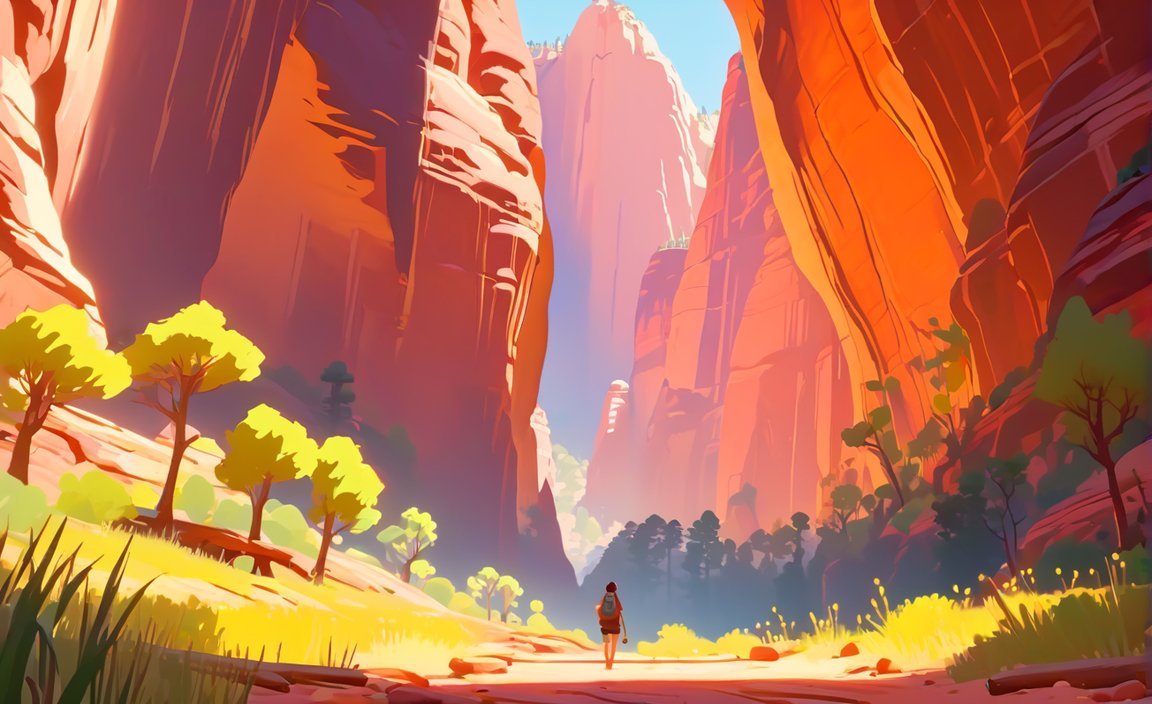
FAQ
Q1: When was Zion National Park established?
A1: Zion National Park was established on November 19, 1919, making it Utah’s first national park [1].
Q2: Why is Zion National Park called “Zion”?
A2: The park was named “Zion” by Mormon pioneer Isaac Behunin in 1863. He settled the canyon floor and was inspired by the biblical term for a place of refuge and peace [1].
Q3: How long is the Zion Canyon?
A3: The Zion Canyon is 15 miles long and up to half a mile deep, carved by the Virgin River over millions of years [1].
Q4: What kind of wildlife can be found in Zion National Park?
A4: Zion National Park is home to diverse wildlife, including 68 mammal species, 291 bird species, 44 reptile and amphibian species, and 8 fish species [1].
Q5: What is the highest and lowest point in Zion National Park?
A5: The park’s highest point is Horse Ranch Mountain, standing at 8,726 feet, while the lowest point is Coalpits Wash, which is 3,666 feet above sea level [1].
